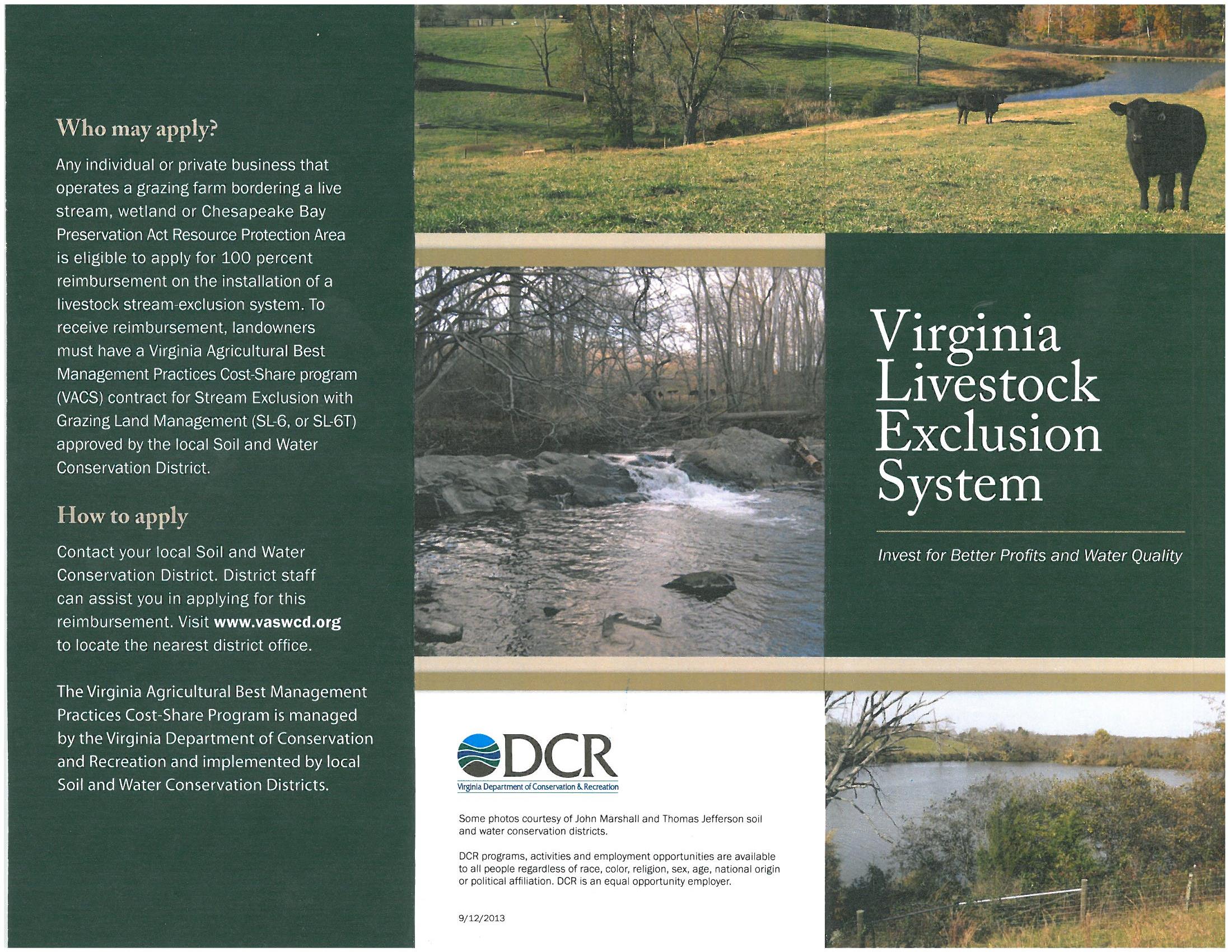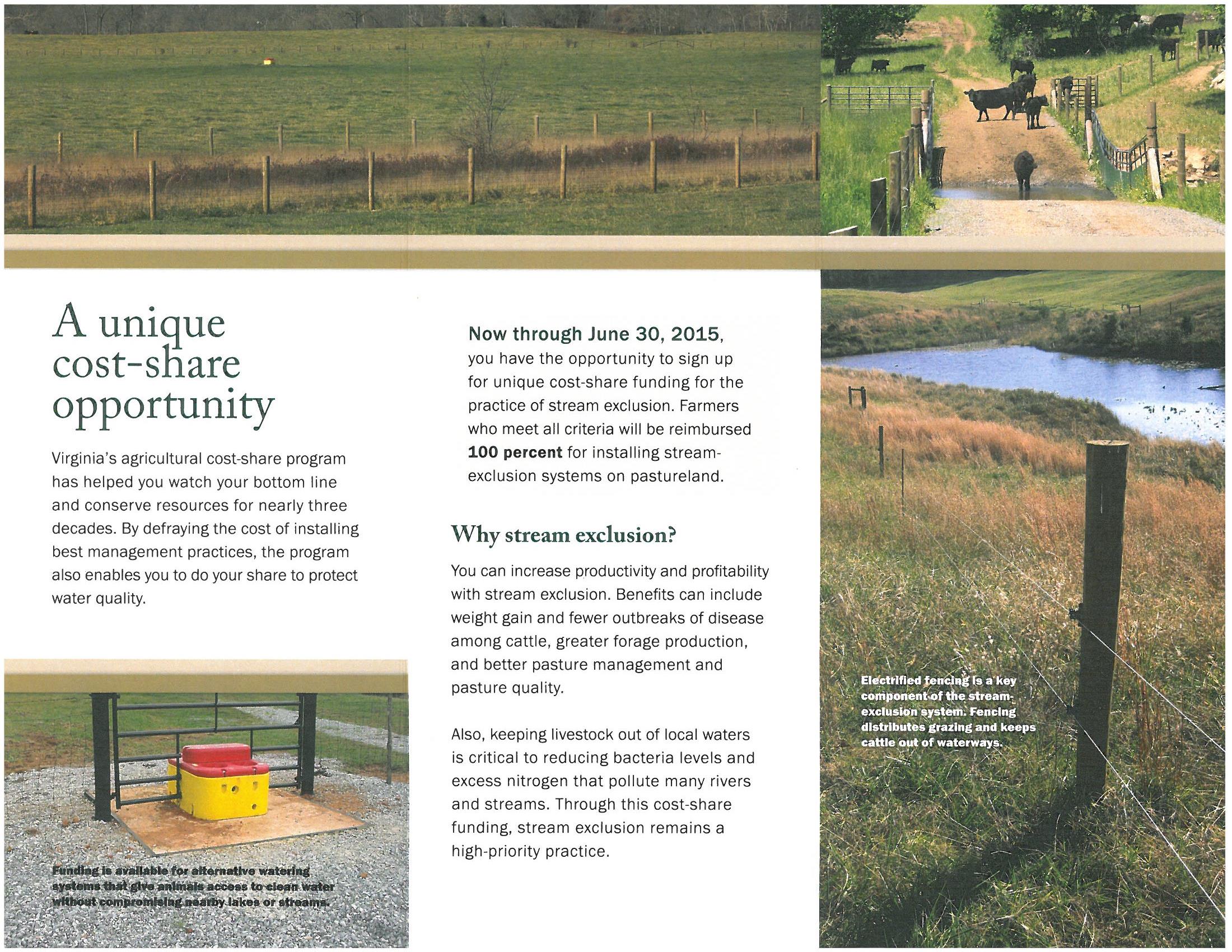Discussion about whether to exclude livestock from local waterways and streams can be contentious at times. However, the practice is a high-priority for Virginia as the state tries to do its part to improve local and regional waterways.
For many farmers, excluding their cattle from streams is the right thing to do and fits into their operation and management system. For other farmers, they have questions about the costs of installation and ongoing maintenance and how — or if — the practice can work on leased land. And for some farmers, being encouraged to exclude their cattle from streams feels like an intrusion of privacy and an infringement of their rights.
In working with farmers through the years, I have heard many conversations on why you should or should not exclude your cattle from streams. Of these conservations, I distinctly remember comments by two forward-thinking Virginia dairy farmers who said, “It is the 21st century and it’s the right thing to do!” and “Given all the educational, technical assistance and financial resources devoted to keeping cattle out of streams at the local, state and federal level, the practice of not keeping cattle out of streams would be indefensible today in a court of law.” (see photos below on programs and resources available)
 Certainly, research into the benefits of livestock exclusion on cattle performance and herd health needs to continue. However, the benefits can include:
Certainly, research into the benefits of livestock exclusion on cattle performance and herd health needs to continue. However, the benefits can include:
- Improved weight gain;
- Decreased incidence of disease and foot-related ailments
- Increased forage utilization;
- Enhanced pasture management and quality; and
- Reduced visits and bills from the veterinarian.
For farmers who have had questions about the costs of installation and ongoing maintenance and how –or if — the practice can work on leased land, they should know it is a high-priority and the state is providing resources to overcome any barrier to adoption and implementation of the practice. Virginia will provide 100% reimbursement on the installation of a livestock stream-exclusion system. Farmers and landowners can sign up for the unique cost-share opportunity now through June 30, 2015.
 Do your part and do the right thing! Contact your local Soil and Water Conservation District to learn more about the practice and apply for reimbursement.
Do your part and do the right thing! Contact your local Soil and Water Conservation District to learn more about the practice and apply for reimbursement.



